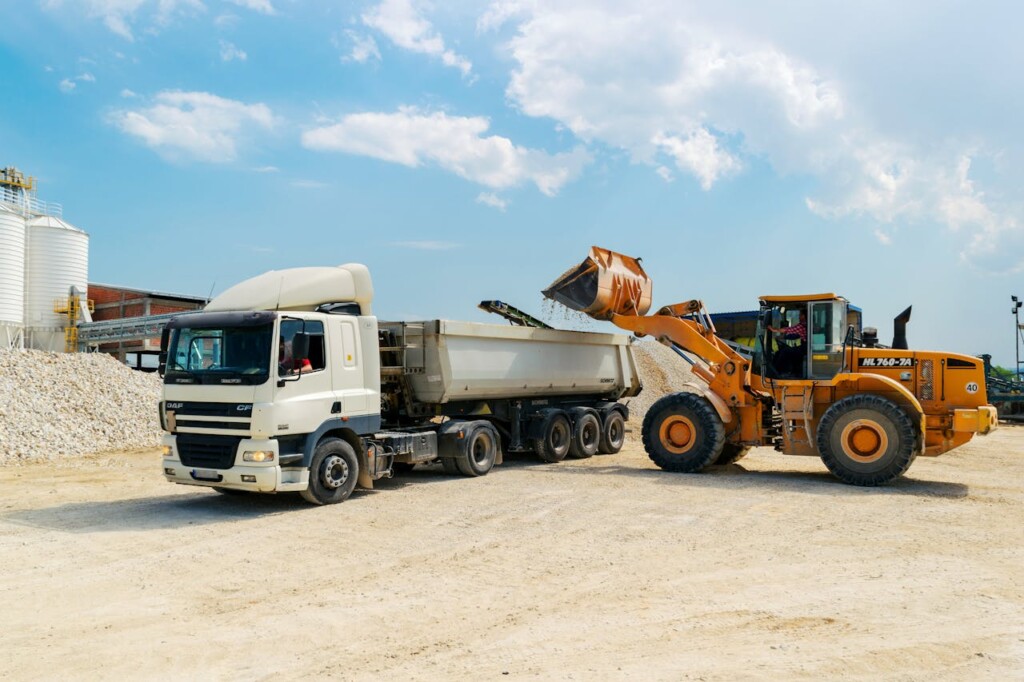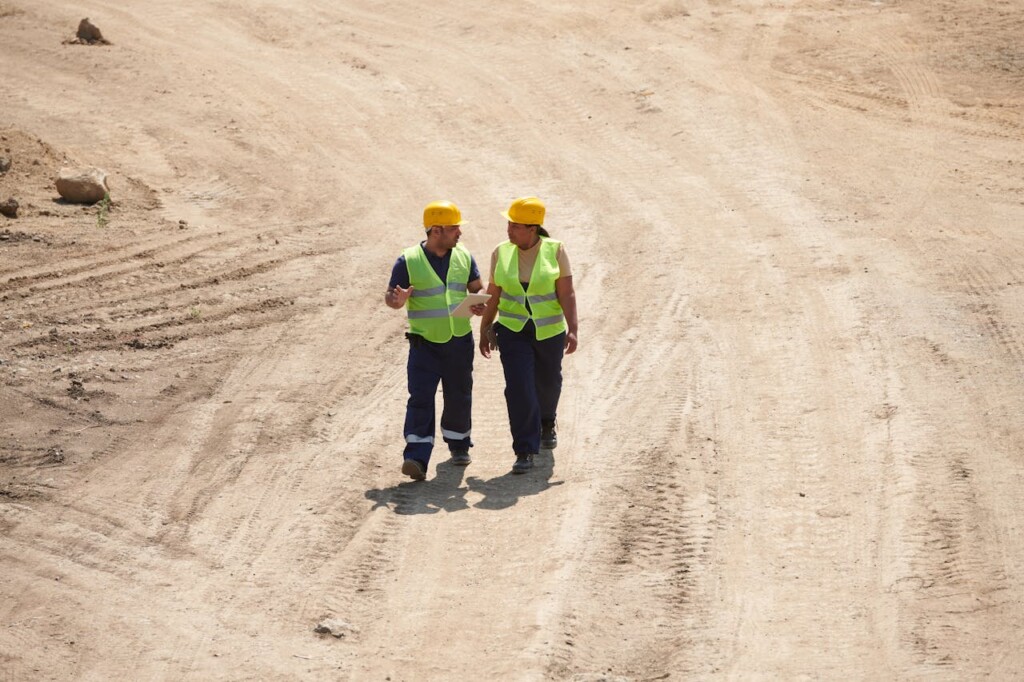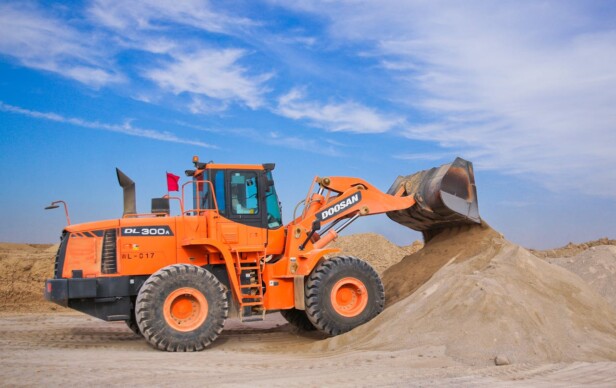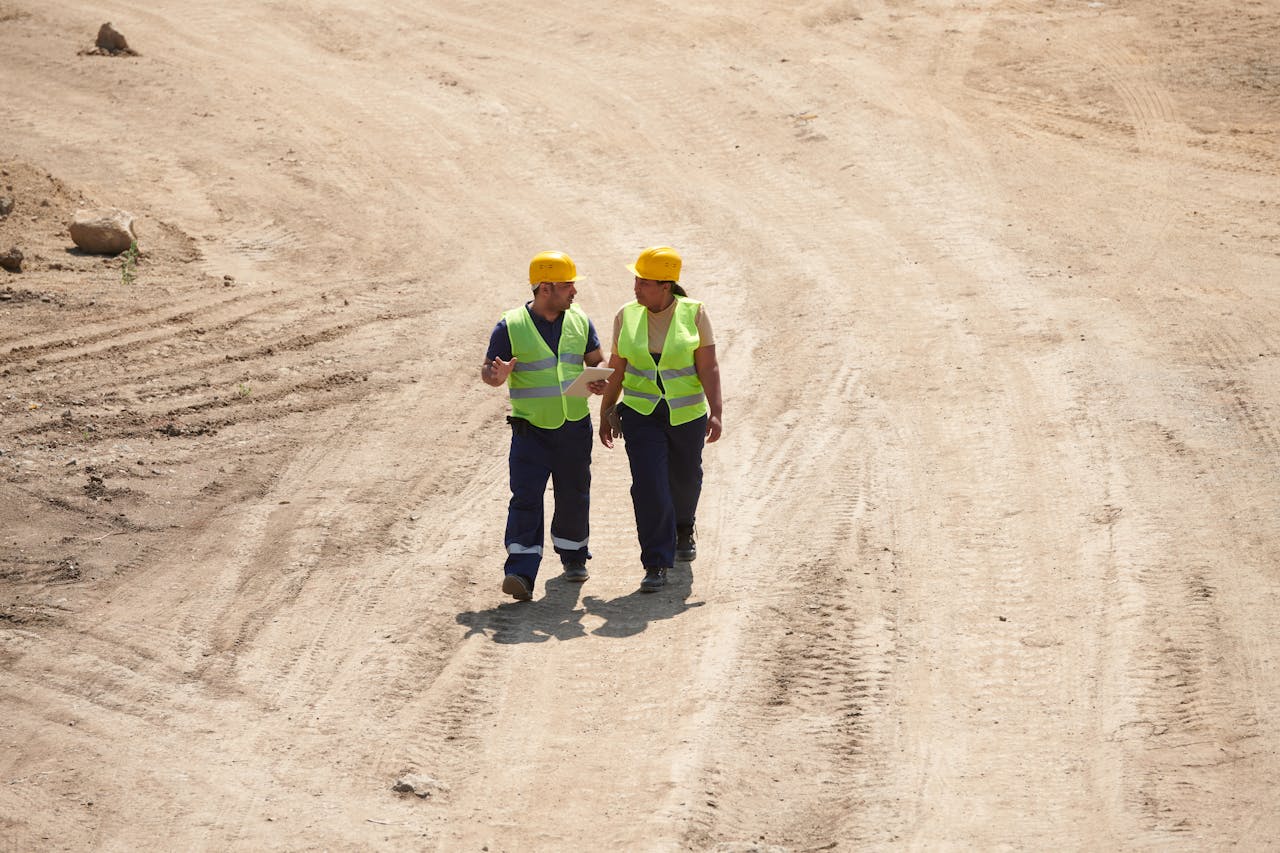Every construction project begins below ground level. OSHA defines excavation as any man-made cut, cavity, trench, or depression formed by earth removal. This process removes soil or rock to create the foundation space where buildings will stand for decades.
We approach excavation in construction as the foundation of structural stability and long-term performance. Proper excavation prevents water damage by establishing correct drainage patterns and creates level surfaces for footings and utility installations. The scope covers planning site surveys, executing material removal, and preparing stable platforms for the construction phases that follow.
How Is The Excavation Process Planned And Executed On Site?

Planning and executing excavation on construction sites requires systematic coordination between survey teams, equipment operators, and safety personnel. We begin each project with comprehensive site evaluation to establish excavation boundaries, identify underground utilities, and assess soil conditions that will influence our approach.
The site survey forms the foundation of our excavation planning process. Our teams use electronic locating equipment and physical probing to map existing utilities, determine soil composition through visual and manual testing, and identify potential hazards like unstable ground or nearby structures. This initial assessment helps us calculate excavation volumes, select appropriate equipment, and establish safe work zones around the dig area.
Development Of Detailed Excavation Plans
We develop written excavation plans that specify methods, equipment selection, and work sequencing for each project phase. These plans define access routes for heavy machinery, specify wall support systems based on soil classification, and outline prevention measures for cave-ins or structural failures. The documentation includes protective system requirements, whether we use sloping, shoring, or shielding approaches.
Our excavation plans incorporate environmental controls to manage dust, noise, and water quality impacts during construction. We establish monitoring protocols for air quality and implement erosion control measures to prevent sediment runoff. Equipment operators receive clear instructions on material removal techniques, including the requirement to excavate in controlled layers rather than large bulk removals.
Permit Acquisition And Regulatory Compliance
Obtaining proper permits represents a critical step before any excavation begins. We coordinate with local authorities for permits covering drilling, blasting, and heavy machinery operation near existing infrastructure. State regulations typically require 48 to 72 hours advance notice through one-call systems to locate underground utilities.
Our teams verify that all utility owners provide positive responses confirming their facilities are marked or cleared from the excavation area. We maintain documentation of permit approvals, utility clearances, and regulatory notifications throughout the project. This compliance framework protects both our crews and existing infrastructure from damage or service interruptions.
On-Site Execution And Material Removal
During excavation work, our operators remove materials in controlled lifts using the equipment and methods specified in the approved plan. We maintain minimum clearance distances from marked utilities and use hand tools or vacuum excavation within tolerance zones to prevent damage. Mechanical equipment operators work with dedicated spotters who monitor for underground facilities and guide safe digging practices.
Material removal follows a systematic sequence that exposes utilities gradually and maintains stable excavation walls. We use probe rods to verify the location and depth of buried facilities before mechanical digging proceeds. Our crews separate topsoil from subsoil when required and place spoil piles at safe distances from excavation edges to prevent surcharge loading.
Monitoring And Documentation Requirements
We conduct regular inspections at the start of each shift and after weather events that could affect excavation stability. Our competent persons evaluate soil conditions, protective system integrity, and atmospheric hazards before personnel enter excavations. These daily assessments are documented on excavation checklists that verify compliance with safety standards.
Environmental monitoring continues throughout the excavation process to ensure dust and noise levels remain within acceptable limits. We track air and water quality impacts and adjust our methods when conditions change. Progress documentation includes photographs, depth measurements, and notes on any deviations from the original plan that require stakeholder notification or plan modifications.
What Types Of Excavation Are Used In Construction And When?
Construction projects require different excavation approaches based on their specific purpose and the materials being removed. We categorize these methods by their intended use and the type of material being excavated, allowing us to match the right technique to each project’s requirements.
Excavation Methods By Purpose And Location
Trenching serves as the backbone for utility installations, creating narrow, deep cuts that house water lines, electrical conduits, and sewer systems. We execute this work with precision to ensure proper depth and grade for long-term performance.
Footing excavation follows site grading and creates the foundation support that prevents buildings from settling or shifting. This work demands accuracy since concrete footings will be poured directly into these excavated areas.
Bridge and roadway excavation involves removing materials to build or replace transportation infrastructure. These projects often require coordination with traffic patterns and existing utilities that cross beneath roadways.
Channel excavation and drainage excavation direct water flow away from structures and properties. We create ditches, swales, and retention areas that manage stormwater runoff and prevent flooding damage.
Underground excavation and tunneling create passages for subways, pedestrian walkways, and utility corridors. This specialized work requires additional safety measures and often involves working in confined spaces.
Cut and fill operations clear and level large areas by removing soil from elevated sections and using it to fill lower areas. This approach balances earth movement and reduces the need to import or export materials.
Basement excavation creates below-grade spaces for storage, mechanical systems, or additional living areas. The scope depends on building size and can involve significant depth and volume.
Excavation Methods By Material Type
Topsoil removal strips the upper layer containing organic matter that cannot support structural loads. We typically preserve this material on-site for later landscaping use since it contains valuable nutrients.
Earth excavation removes the soil layer directly beneath topsoil. This material often works well for creating embankments, backfill, or foundation support once properly compacted.
Rock excavation uses specialized equipment including hydraulic breakers, drilling equipment, or controlled explosives to remove bedrock and large boulders. This challenging work requires experienced operators and additional safety protocols.
Muck excavation handles water-saturated soil mixtures that lack stability for construction. We either relocate this material to areas where it can dry or treat it with additives to improve its properties.
Dredging removes sediment, debris, and deposits from underwater locations. This work maintains navigation channels and prepares waterfront sites for construction projects.
Borrow excavation brings suitable material from off-site sources when the existing soil cannot meet project requirements. We source sand, gravel, or engineered fill from approved locations.
Drilling supports specialized applications including water wells, geothermal systems, soil testing, and foundation piers. Each application requires specific equipment and techniques to achieve the required depth and diameter.
Which Equipment And Attachments Are Used For Excavation Tasks?

Core machinery forms the backbone of excavation operations. Excavators deliver the primary digging power with their hydraulic arms and rotating platforms, while backhoes combine front-loading capability with rear excavation functions. Bulldozers push and level materials across the site, and wheeled loaders handle material transport and stockpiling efficiently.
Specialized equipment addresses specific site conditions. Mini-excavators navigate tight spaces where standard machines cannot operate, making them essential for utility work and residential projects. Hydraulic hammers break through concrete and rocky surfaces that conventional buckets cannot penetrate. Tracked dumpers transport heavy loads across rough, uneven terrain where wheeled vehicles would struggle.
Primary Excavation Machinery
Excavators anchor most excavation operations with their versatility and power. These machines use hydraulic systems to operate boom, dipper, and bucket assemblies for precise digging and material handling. Track-mounted models provide stability on soft ground, while wheeled versions offer mobility on hard surfaces.
Backhoes deliver dual functionality through their tractor-like design. The front loader bucket handles material transport and loading, while the rear excavator arm performs trenching and precise digging. Their compact size makes them valuable for urban work and smaller construction sites.
Bulldozers excel at moving large volumes of material across the excavation area. Their wide tracks distribute weight evenly, preventing ground damage while pushing soil, debris, and loose rock. The rear ripper attachment breaks up compacted surfaces before excavation begins.
Specialized Support Equipment
Mini-excavators serve confined areas where access limits standard machinery. We deploy these compact units for utility trenching, landscaping work, and interior demolition where maneuverability matters more than raw capacity. Their reduced ground pressure protects finished surfaces.
Tracked dumpers handle material transport in challenging terrain conditions. Their low ground pressure and articulated steering systems navigate slopes, mud, and uneven surfaces that would stop conventional dump trucks. Wheeled loaders work efficiently on stable ground, moving materials between stockpiles and loading trucks with speed.
Essential Attachments For Enhanced Productivity
Bucket attachments form the most common tool group for excavation work. Standard digging buckets provide soil penetration and material collection, while grading buckets create smooth, level surfaces. Rock buckets feature reinforced construction and sharp teeth for breaking through hard materials.
Specialized buckets expand operational capability significantly. Mixing buckets allow concrete placement directly from the excavator, eliminating additional equipment needs. 4-in-1 buckets combine loading, leveling, grabbing, and discharging functions in one attachment, reducing the need for frequent tool changes during complex operations.
Dozer blades transform excavators into finishing tools for leveling and backfilling operations. These attachments provide precise grade control and surface preparation. Grader blades create smooth slopes and drainage channels, while hydraulic hammers break up concrete, asphalt, and rock formations that resist conventional digging methods.
Sweeper attachments support site cleanup and surface preparation. These tools remove debris, loose material, and construction waste from finished areas, preparing surfaces for final grading or paving operations.
What Safety And Quality Controls Should Guide Excavation Work?
We establish protective systems before breaking ground. Wall support prevents cave-ins that kill workers within seconds. OSHA standards mandate protective measures for excavations five feet deep or greater, but we implement safety controls regardless of depth.
Trench Safety And Shoring Requirements
Shoring systems use hydraulic supports or aluminum panels to hold trench walls in place. We install these systems without exposing workers to cave-in risks. The protection must extend at least 18 inches above the surrounding ground level.
Heavy equipment stays back from trench edges to prevent vibrations that destabilize walls. Surcharge loads from spoil piles, materials, and machinery remain at least two feet from excavation edges. This distance prevents additional weight from triggering collapses.
We never allow workers under suspended loads or raised equipment buckets. Material handling follows strict protocols to keep personnel clear of falling hazards. Access ladders extend three feet above the trench edge and stay within 25 feet of all workers in excavations four feet deep or greater.
Slope Stability And Erosion Control
Slope angles match soil classification requirements. Type C soil requires slopes no steeper than 1.5:1 for excavations under 20 feet deep. We cut slopes at safe angles and install drainage systems to redirect surface water away from excavation faces.
Erosion control measures include silt fences, sediment basins, and temporary vegetation where appropriate. These systems protect the excavation from washouts while preventing sediment from reaching storm drains or waterways. We monitor slopes after rainfall events and adjust protection as conditions change.
Underground Utility Locating And Protection
Utility locating happens before any digging begins. We contact utility companies and use ground-penetrating radar to map subsurface installations. Hand digging within tolerance zones protects existing lines from damage.
Exposed utilities receive proper support or temporary relocation during excavation work. Gas lines, electrical conduits, and water mains need specific protection measures based on their type and depth. We document utility locations and protection methods for inspection records.
Foundation And Grade Control
Footing excavations extend below the frost line to prevent heaving and settlement issues. Local frost depth determines minimum excavation depth for permanent foundations. We use laser levels and GPS systems to maintain precise grades throughout the dig.
Grade control becomes critical for drainage and structural integrity. We verify elevations against project benchmarks and adjust excavation depths as needed. Bottom preparation includes proper compaction and base materials where specified.
Environmental Monitoring And Documentation
Air quality testing detects oxygen deficiency, combustible gases, and toxic vapors in deep excavations. We monitor atmospheric conditions continuously when hazardous conditions could develop. Ventilation systems provide fresh air circulation when needed.
Dust control uses water spraying and covers to minimize airborne particles. Noise control includes equipment selection, scheduling restrictions, and sound barriers where required by local ordinances. We document all monitoring results and corrective actions taken.
Daily inspections occur before each shift and after weather events. The competent person evaluates excavation conditions, protective systems, and environmental factors. We maintain detailed inspection logs that track site conditions, safety measures, and any changes made during excavation work.
Conclusion And Practical Next Steps

Excavation work demands methodical preparation and systematic execution. The foundation of any successful project begins with understanding site conditions through comprehensive surveys and soil analysis. We establish clear excavation parameters that align with structural requirements and environmental constraints.
Site readiness requires coordinated planning across multiple disciplines. Equipment selection must match specific terrain challenges and material handling requirements. Our teams evaluate hydraulic excavators for precision work, tracked dumpers for challenging access routes, and specialized attachments for varied soil conditions. This equipment planning integrates with sequencing decisions that minimize rework and maximize productivity. Documentation supports every phase from initial permits through final inspections, creating accountability and regulatory compliance.
For teams ready to implement this structured approach, contact EB3 Construction to discuss your excavation planning and execution needs.




